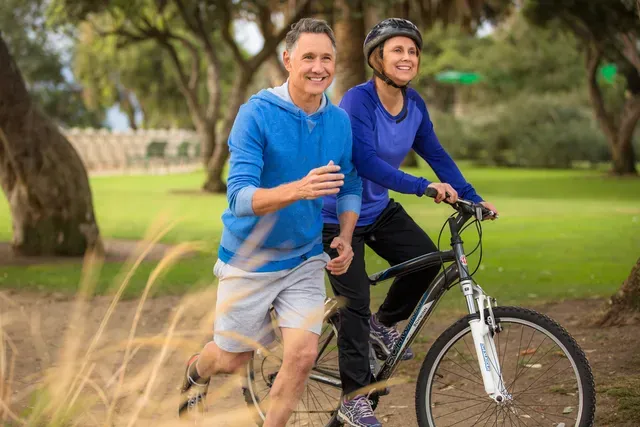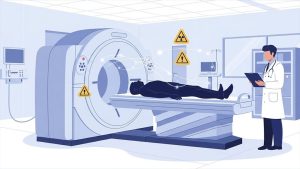Protecting your bone health is easier than you think. Maintaining a healthy lifestyle with a balanced diet, physical activity, and other factors can help you preserve healthy bones.
Protecting your bone health is easier than you think. Maintaining a healthy lifestyle with a balanced diet, physical activity, and other factors can help you preserve healthy bones.
Improving bone health can eliminate the risk for osteoporosis and related complications, such as spinal fractures in the vertebral compression.
Try these tips to maintain healthy bones
1. Regular Strength Training And Weight-Bearing Exercises
Regularly engaging in weight-bearing activities and strength training can help you build and maintain bone mass, strengthening the skeletal frame. Performing these specific exercises can help protect bone health in adults, especially in low bone density.
- Walk or JogWalking or jogging regularly is one of the best exercises. You can decide the frequency and pace of your activity with a certified trainer or your doctor. Walking or jogging for 20-30 minutes, four times a week, is endorsed by physical fitness experts.
- Bench Steps, Jumping, Climbing Stairs
If you want to move a level up from jogging and walk, working out on bench steps, jumping exercises, and climbing the stairs are appropriate activities. These activities can help you achieve a robust aerobic workout and can strengthen your bones as well. - Resistance or Strength TrainingIf you are ready for the full heavy workout approved by your trainer or doctor, then resistance or strength training twice or thrice a week is a great option. A vigorous spell of lifting, pushing, and pulling weights or exercise with resistance bands is good for the bones and also promotes health in general.
2. Avoid Use Of Tobacco
Research suggests that persistent use of tobacco can lead to weak bones. Smoking can pose a significant risk for loss of bone health. It has been observed that smokers have a low balance and increase bone-break chances compared to non-smokers.
3. Regulate Alcohol Consumption
For a healthy lifestyle, it best avoids excessive alcohol use. The body loses its ability to absorb and regulate nutrients like calcium, vitamin D and K, and hormones. It can also contribute to the risk of bone density loss and various types of fractures.
According to the U.S. Dietary Guidelines, moderate alcohol consumption is limited to one drink per day for women and no more than 2 drinks per day for men.
4. Consume Calcium-Rich Diet
The daily recommendation for adults ranges from 1000 to 1200 mg. Every day, people experience a loss of calcium through their skin, nails, sweat, hair, and human wastes, so it is imperative to maintain a balanced diet rich in calcium.
If there is a deficiency, our body consumes that calcium from the bones, making them weak and brittle. Prolonged calcium deficiency may also contribute to hair loss and brittle nails, as calcium plays a role in keratin production and cellular health. This further emphasizes the importance of meeting daily requirements.
- Calcium-rich Food Sources
Dairy products, such as whole or almond milk, soy milk, yogurt, and cheese, are packed with calcium. Leafy greens like kale, spinach, and bok choy are healthy choices and rich calcium sources. Nuts and beans also offer a lot of calcium. Having a calcium-fortified breakfast with cereals, unsweetened oatmeal, and any type of dairy product can be beneficial for you. Seafood is a source of Omega-3 fatty acids or proteins and a rich source of calcium. - Consider a calcium supplement
Suppose you are unable to accomplish your daily intake of recommended calcium through food due to any reason. In that case, you can opt for over-the-counter calcium supplements to meet the daily goal. Consult With your healthcare provider or a pharmacist about potential mixing prescriptions and over-the-counter calcium supplements.
5. Increase Your Vitamin D Intake
Vitamin D is indispensable for calcium absorption and bone health. While there is no set guideline, typically, the dosage recommendations range from 600–2,000 IU per day — but some people may require heavier amounts to reach and sustain healthy blood levels.
- Fortified cereal with Vitamin D, eggs, and fatty fish
Fatty fish and seafood are considered the highest Vitamin D sources. Wild mushrooms or commercially grown that are treated with UV light are packed with Vitamin D.; unlike the regular eggs, free-range and pastured ones are a better choice for Vitamin D as the chicken they come from gets ample sun exposure. Vitamin D is often added as an additional nutrient to milk and breakfast cereals to increase their nutritiousness. - Sunlight & Supplements
Vitamin D is naturally absorbed in the body by spending 5-10 minutes in the sunlight. If you cannot obtain the right amount of Vitamin D naturally from food or sunlight, then supplements are often recommended. Before you pick a dose over the counter, it is advised to get your levels checked. In some cases, your health care provider may even suggest you get shots to cover up Vitamin D deficiency.
These are some basic yet essential tips to help you improve your bone health. If you are worried about your bones, you can schedule your bone density test at One Step Diagnostic today.




